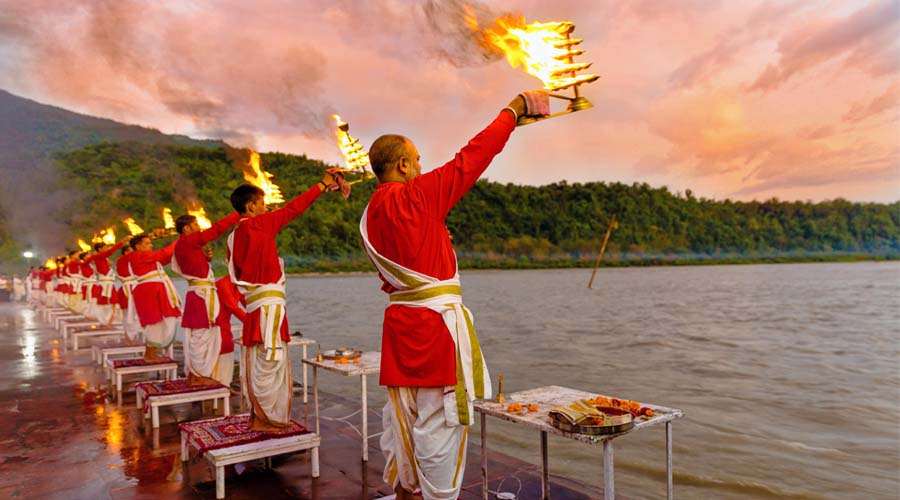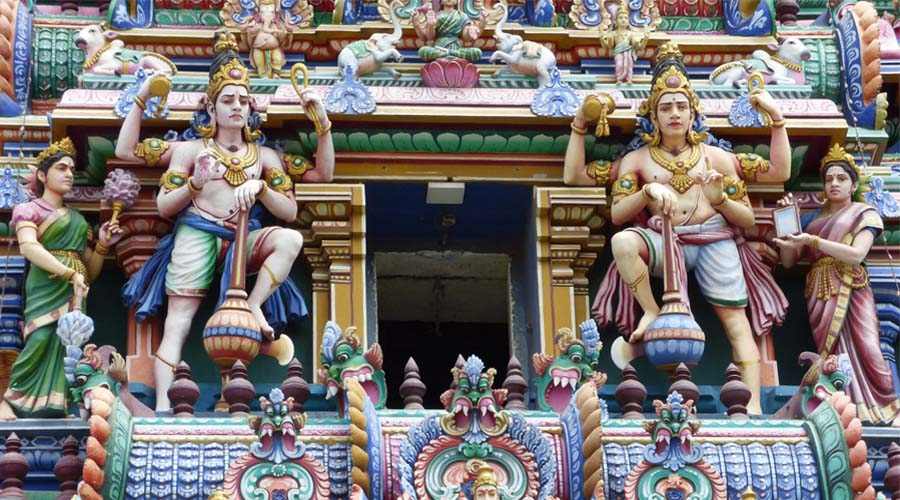Rishikesh, the famous Yoga Capital of the World, attracts travelers, pilgrims, and wellness seekers from across the globe. Among its numerous temples, ashrams, and yoga centers, one place that truly embodies the spirit of this town is Triveni Ghat. Considered one of the most sacred bathing ghats in India, Triveni Ghat Rishikesh is where faith, culture, and spirituality meet. Known for its divine Ganga Aarti, this ghat is a must-visit for anyone exploring spiritual places in Rishikesh.
Historical and Mythological Importance
The word Triveni means the confluence of three holy rivers—Ganga, Yamuna, and the mythical Saraswati. While only the Ganga is visible here, devotees believe the other two rivers flow underground, creating a sacred sangam. This belief elevates Triveni Ghat’s spiritual importance, similar to the Triveni Sangam in Prayagraj.
According to legends, Lord Krishna visited this place after being injured by a hunter’s arrow, making it a revered site for Vaishnav devotees. Ancient scriptures like the Purāṇas mention sages meditating here for spiritual liberation. Today, Triveni Ghat continues to carry forward this legacy of devotion and meditation, drawing thousands of pilgrims.
The Experience of Triveni Ghat
From sunrise to sunset, Triveni Ghat bustles with activity. Devotees bathe in the holy waters of the Ganga to cleanse their sins and seek blessings for prosperity. On auspicious days such as Makar Sankranti, Kartik Poornima, and Amavasya, large gatherings can be seen performing rituals and puja.
Experiencing the ghat early in the morning offers a glimpse of true Rishikesh life—priests performing rituals, sadhus chanting mantras, and yoga practitioners meditating by the river. The synergy of nature and devotion makes it one of the most famous ghats in Rishikesh.
Ganga Aarti at Triveni Ghat
The highlight of visiting Triveni Ghat is the enchanting Ganga Aarti of Rishikesh, performed daily at dusk. Dozens of priests, dressed in saffron robes, chant prayers and light multi-tiered brass lamps. The rhythmic sound of conch shells, bhajans, and temple bells blends with the fragrance of incense, creating a divine atmosphere.
As the twilight sky darkens, hundreds of floating diyas placed in leaf boats drift across the river, symbolizing hope and devotion. Unlike the grand Ganga Aartis of Haridwar and Varanasi, the Triveni Ghat Rishikesh Ganga Aarti feels more personal and serene, making it a must-attend event during your trip.
Daily Life and Temples Around
Besides the riverbank, Triveni Ghat is surrounded by shrines that add to its religious appeal. The Geeta Mandir displays murals from the Mahabharata, while the Lakshminarayan Temple attracts Vaishnav devotees. The area is lively with flower sellers, ritual vendors, and pilgrims from across India.
During Hindu festivals in Rishikesh, such as Diwali or Holi, the ghat comes alive with colors, rangolis, and chanting, attracting both locals and tourists. This fusion of spirituality and culture makes Triveni Ghat more than just a religious stop—it is a microcosm of India’s spiritual diversity.
Triveni Ghat and Yoga Tourism
Rishikesh is globally famous for yoga and meditation, and Triveni Ghat complements this identity. Many yogis and international travelers meditate at the ghat, especially during the quiet morning and afternoon hours. The sound of flowing Ganga and the calm aura of the surroundings make it an ideal spot for reflection.
Nearby ashrams and yoga centers often bring students here, combining traditional rituals with modern wellness practices. For spiritual seekers, this blend of divinity and meditation enhances the transformative experience of Rishikesh tourism.
Best Time to Visit Triveni Ghat
The best time to visit Triveni Ghat in Rishikesh is from October to March when the weather is pleasant and favorable for sightseeing. Sunrise and sunset are particularly magical, as the rays reflect on the Ganga waters.
If you wish to experience Indian spirituality in full fervor, visit during festive occasions like Makar Sankranti and Kartik Poornima, when pilgrims gather for ritual baths. Even monsoon mornings or summer evenings offer a peaceful setting, though the ghat can be crowded during vacations.
Visitor Tips
Arrive at least 30–40 minutes before the evening Ganga Aarti to find a good viewing spot.
Dress conservatively since the ghat is regarded as a sacred space.
Carry a small diya or flowers if you want to join the river offering ritual.
Respect ongoing prayers and avoid making loud noise or disruptions.
Keep your belongings safe as the ghat can get crowded.
Why You Must Visit
Triveni Ghat is not just a spiritual place in Rishikesh, but also a cultural landmark. Watching the Triveni Ghat Rishikesh Ganga Aarti can be a life-changing experience—flames dancing against the Himalayan sky, chants rising above the river, and floating diyas illuminating the Ganga create a scene of divine beauty.
For pilgrims, it marks the beginning of auspicious journeys like the Char Dham Yatra. For travelers, it provides a deep cultural insight into India. For seekers of peace, it offers meditation by the holy river. In every sense, Triveni Ghat embodies the essence of Rishikesh—simple, spiritual, and timeless.
Conclusion
Triveni Ghat Rishikesh is more than just a riverbank; it is one of the most significant spiritual places in Uttarakhand. With its mythology, rituals, and divine Ganga Aarti, it stands as a symbol of eternal devotion and cultural unity.
Whether you come as a pilgrim, a tourist, or a yoga student, Triveni Ghat welcomes you with the melody of flowing waters and the warmth of faith. It is a reminder of life’s spiritual essence amid the material rush, a timeless treasure of Rishikesh tourism.


